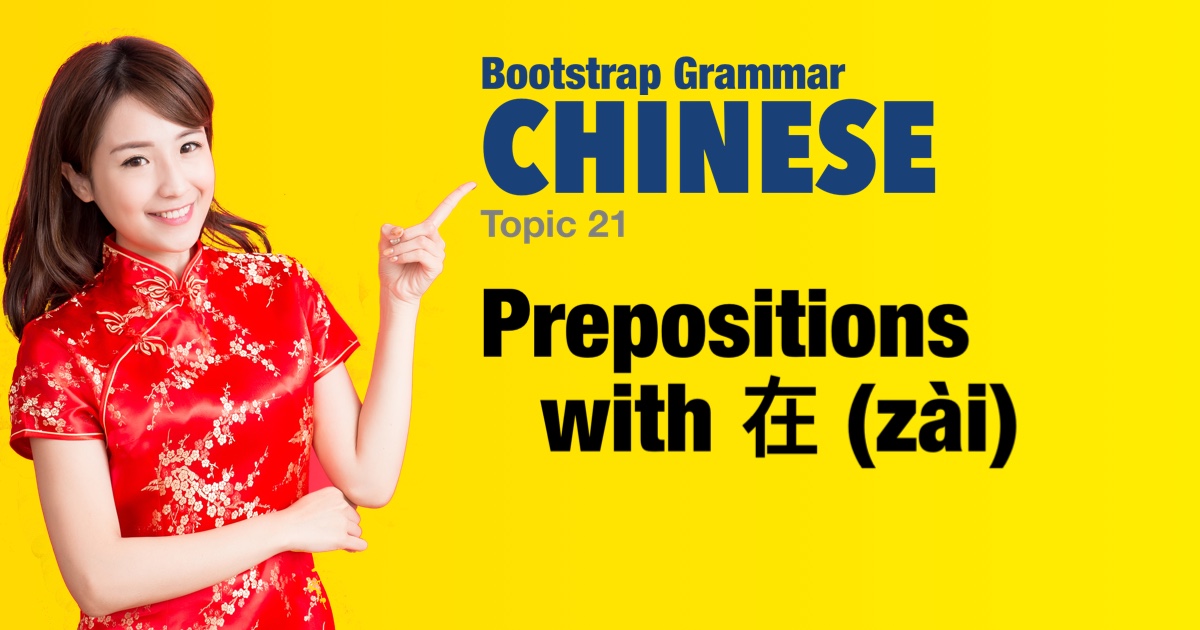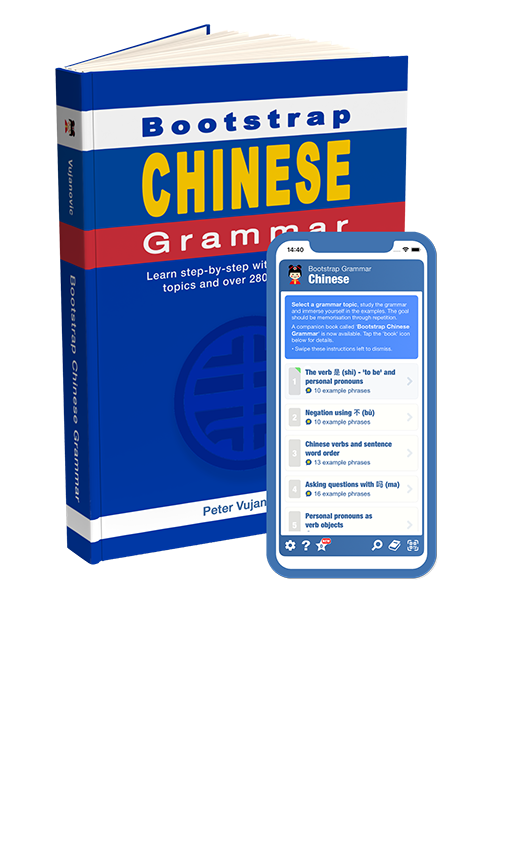Chinese grammar - Prepositions with 在 (zài) |
|||
|
|||
We saw in a previous topic that the prepositional verb 在 (zài) can be used to denote existence at a location. It can further be used with basic prepositions to more precisely specify location relative to an object. So when 在 is used without a preposition it means 'at', but with 里 for example, it more precisely means 'to be located in', 'to be located inside' or 'to be located within'. Recall that 在 behaves as a verb so it appears between the subject and object nouns. However, as we saw previously, the preposition should come after the noun it refers to. So the pattern is: [subject] + 在 + [location] + [preposition]. |
| Examples: | |
|
狗在床下。
gǒu zài chuáng xià. The dog is under the bed.
|
|
|
他在房间里。
tā zài fángjiān lǐ. He is inside the room.
|
|
|
杯子在桌子上。
bēizi zài zhuōzi shàng. The cup is on the table.
|
|
|
鞋子在床下。
xiézi zài chuáng xià. The shoes are under the bed.
|
|
|
书在书架上。
shū zài shūjià shàng. The book is on the bookshelf. |
|
|
男孩在操场里。
nánhái zài cāocháng lǐ. The boy is in the playground.
|
|
|
女孩在公园里。
nǚhái zài gōngyuán lǐ. The girl is in the park.
|
|
|
孩子在树下。
háizi zài shù xia. The children are under the tree.
|
|
|
船在桥下。
chuán zài qiáo xia. The boat is under the bridge.
|
|
 |
|


 So literally: dog is located bed under
So literally: dog is located bed under
